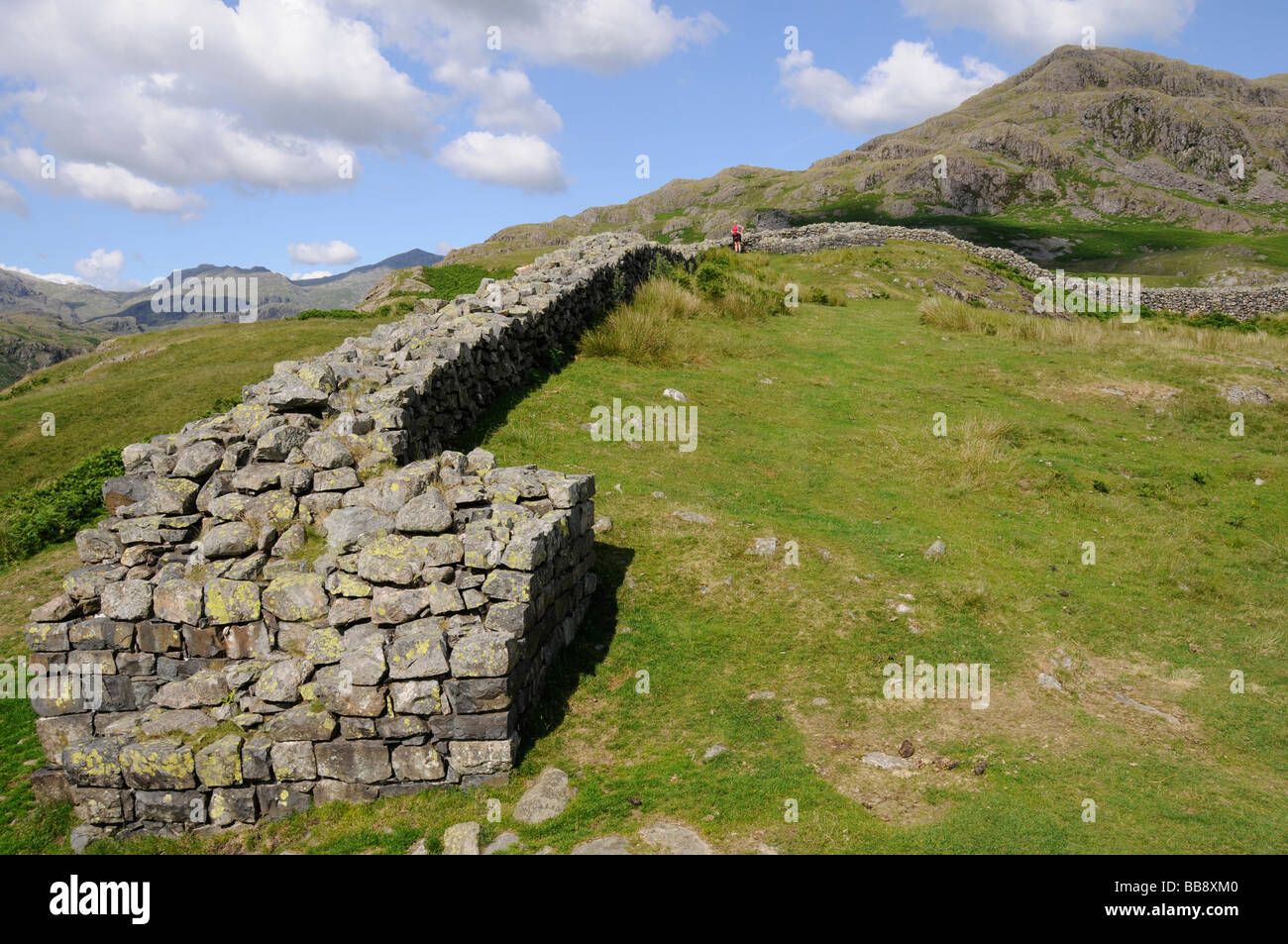Hardknott Pass and Roman Fort in the English Lake District.

Image details
Contributor:
Simon Hathaway / Alamy Stock PhotoImage ID:
BB8XM0File size:
50 MB (2.7 MB Compressed download)Releases:
Model - no | Property - noDo I need a release?Dimensions:
5128 x 3406 px | 43.4 x 28.8 cm | 17.1 x 11.4 inches | 300dpiDate taken:
2008Location:
Hardknott Fort, Eskdale, Lake District, England.More information:
Hardknott Pass is a pass that carries a minor road between Eskdale and the Duddon Valley in the county of Cumbria, England, in the Lake District National Park. The road approaching the pass is the steepest road in England with both achieving a gradient of 1 in 3. Hardknott Roman Fort was a fort in the Roman province of Britannia. Its remains are located on the western side of the Hardknott Pass in the English county of Cumbria (formerly part of Cumberland). It was built on a rocky spur giving a superb view over the River Esk in both upper and lower Eskdale, and protecting Hardknott Pass. The fort has been commonly known in recent times as Hardknott Castle, but identified from the Ravenna Cosmography as the Mediobogdo fort (or more correctly Mediobogdum), situated along the road between the forts of Galava (Ambleside) and Glannoventa (Ravenglass). The Roman garrison here was a detachment of 500 cavalry from the Dalmatian coast. Built between about AD 120 and 138, the fort was abandoned during the Antonine advance into Scotland during the mid 2nd Century. The fort was reoccupied c AD 200 and continued in use until the last years of the 4th century. During this time an extensive vicus developed outside the fort. The fort is square with rounded corners, 114 metres long externally, or 105 metres internally, the rampart wall being about 1.7 metres thick with ditches adding to the total width of the rampart. The low walls of the fort were "restored" some years ago, a slate course showing the height of the walls before their rebuilding. Outside the square of the fort is the remains of the bath house (which has a rare circular sudatorium), and the levelled parade ground, which is considered to be the finest surviving example in the Western Empire. The fort is on land owned by the National Trust, part of the Trust's Wasdale, Eskdale and Duddon property, and maintained by English Heritage.